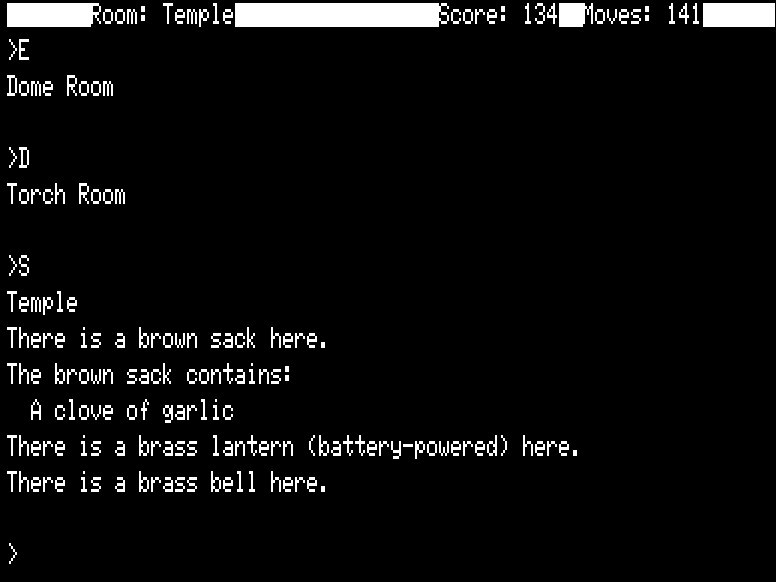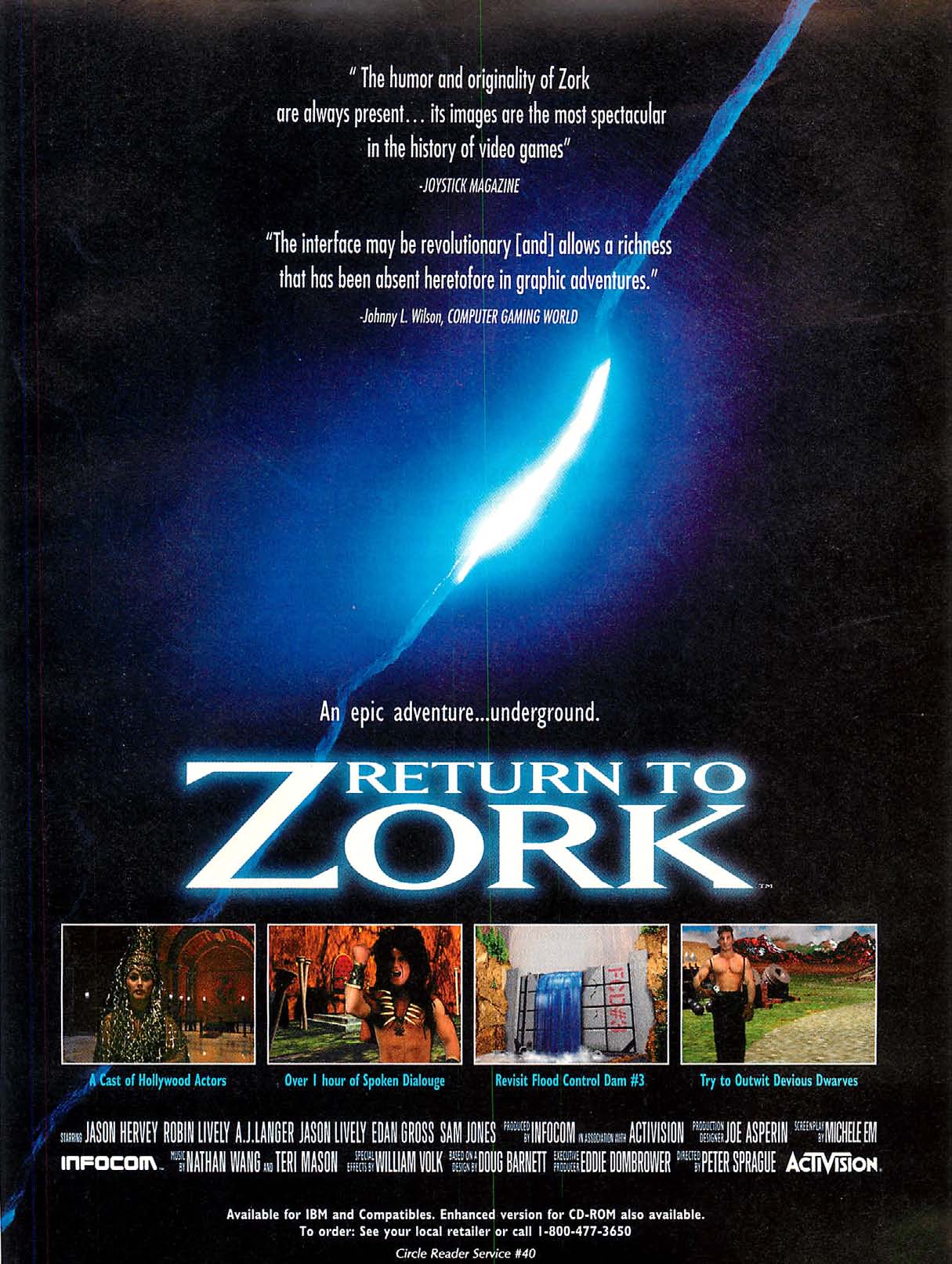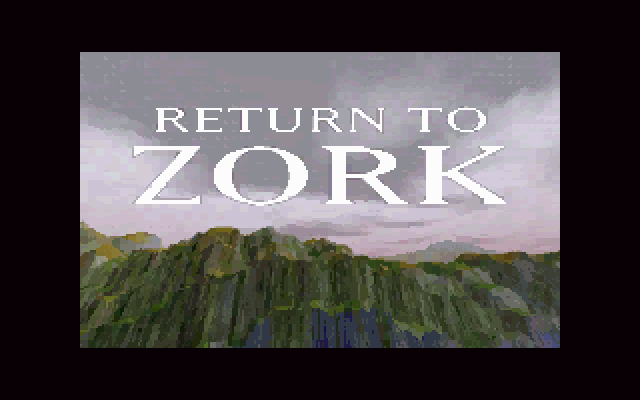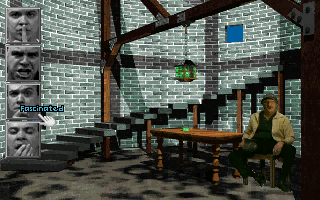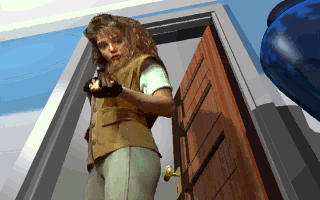Zork, TRS-80.
http://darth-azrael.tumblr.com/post/163484334369/vgjunk-zork-trs-80
Zork has a lineage the goes back pretty much as far as computer games go and it is one of the most prolific games in existence in terms of the number of platforms it was available for. The TRS-80 version was the very first commercial version available in 1980. But I’m getting ahead of things…
Zork is a text adventure game or Interactive Fiction as some like to call it. Essentially, it is an adventure game that is played entirely in text. Descriptions of events, the environment and objects in the environment are given as text and commands are issued as text. This was a briefly popular genre of games from when computers were more limited. The Zork series is perhaps the most popular though there were a number of other such games by Infocom and others throughout the early to mid 1980s and beyond.
Zork was inspired by the simpler Colossal Cave Adventure which was written in 1975 in FORTRAN to run on a DEC PDP-10. Like Colossal Cave, Zork (or Dungeon as it was originally called) was written to run on a PDP-10 but it was written using MDL (a LISP derivative). An ~512K version was runnable by 1977 and it was ported to TENEX/TOPS-20 which was an operating system than ran on various DEC mainframes. At this point, the game started making its way around the Arpanet (Internet predecessor) though enhancements and bug fixes would continue to be made until 1979. At this point the game was about 1 MB which was massive for the time. Zork was also ported to FORTRAN with an initial release in January 1978 which led to it becoming available on more platforms, such as the PDP-11 and DEC VAXes.
Finally, the original developers decided to form Infocom and make Zork one of their first products. Since home computers didn’t generally have FORTRAN compilers at this time, they decided to reimplement the game using a language they invented (Zork Implementation Language) and build interpreters for each machine (interpreted languages like Python work in an analogous manner). The first interpreter (ZIP for Z-machine Interpreter) was completed in 1979. After this, much of the game had to be cut out because a megabyte was way too big for home computers at the time. The first Zork release for home computers contained about half of the original locations. The remaining locations would be used for Zork II and III. Initially, Infocom made a deal with Personal Software, the same company responsible for VisiCalc, to distribute Zork and the TRS-80 version was the first version completed in 1980. An Apple II version followed in 1981 and when Zork II was released, Infocom took over distribution. When Zork III was released in the Fall of 1982, interpreters were also released for the Commodore 64, Commodore Plus/4, Atari 8-bit, CP/M, and IBM PC. Further platforms would follow and the rest is history.
The original TRS-80 version was distributed in a clear plastic bag containing just the disk and a 36 page book (pictured above). This version is quite rare today. After Zork II came out and the original was re-released as Zork I, it came in the typical folio packaging Infocom was known for. This version required the TRS-80 Model III with 32K but otherwise I’m not sure what the difference between the games was.

